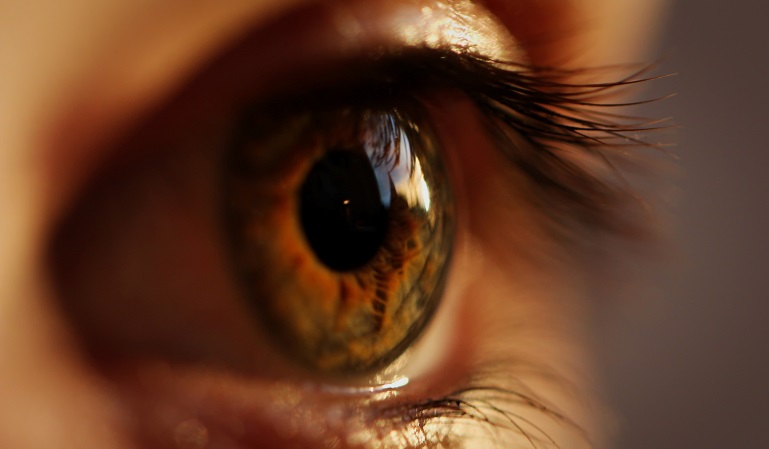
By reviewing a feedback pathway between certain neurons and cells within the eye, a team of scientists at the Wayne State University School of Medicine led by Tomomi Ichinose, Ph.D., has discovered a new mechanism for how the retina detects motion.

“Our eyes see visual objects, in which the retina is equipped with many types of neurons to sense and process the visual information. Seeing a moving object is critical for animals’ survival, which depends on neural circuits
for visual motion detection in the retina. However, the neural circuit is complicated and is not fully understood,” Dr. Ichinose said. “We discovered that retinal bipolar cells, second-order neurons, receive cholinergic feedback from starburst amacrine cells, third-order neurons, resulting in enhancing directional signaling of postsynaptic neurons in motion detection circuits. This is a novel mechanism of motion detection.”
Dr. Ichinose is an associate professor of Ophthalmology, Visual and Anatomical Sciences, and the principal investigator of the project, detailed in “Cholinergic feedback to bipolar cells contributes to motion detection in the mouse retina,” published last month in the journal Cell Reports.
The discovery is important to eye health because visual impairment disrupts normal life. “However, curing the retinal diseases and fabrication of the retinal devices have not been achieved because we have not fully understood the retinal neural networks. Our study will contribute to understanding both normal eye functions and diseased eyes,” Dr. Ichinose said.
Study contributors included School of Medicine students and alumni Chase Hellmer, Ph.D., a doctoral student in the lab who conducted the most challenging experiments, including patch clamp study and virus injection. He is now a postdoctoral fellow at the University of Louisville. WSU School of Medicine alumnus Leo Hall, M.D. ’21, contributed to the initial set up of the ganglion cell patch clamp recordings. He is now an Ophthalmology resident at Wills Eye Hospital in Philadelphia. Current lab members on the study team include Jeremy Bohl, a doctoral student at WSU who contributed to ganglion cell patch clamp recordings; research assistant Zachary Sharpe, who conducted immunohistochemistry to verify the molecular expression of acetylcholine receptors in bipolar cells; and Robert Smith, Ph.D., a University of Pennsylvania professor conducted neural network modeling to verify the hypothesis.
Retinal bipolar cells are second-order neurons that transmit basic features of the visual scene to postsynaptic partners whose contribution to motion detection has not been fully appreciated by other labs in the field. Dr. Ichinose and team found that a subset of bipolar cells expressed acetylcholine receptors.
“It surprised us because these bipolar cells should receive synaptic inputs from a type of neuron -- starburst amacrine cells -- a critical neuron of motion detection,” she said.
From there, Dr. Ichinose hypothesized the motion detection mechanism almost four years ago based on her lab’s data in retinal bipolar cells. They examined the hypothesis using electrophysiological methods, immunohistochemistry, molecular biology and computer simulation.”
Moving forward, the team will use a new National Institutes of Health grant awarded last year to set up a two-photon microscope to examine motion detection, a more efficient and direct method.